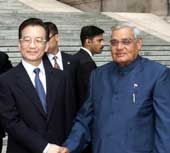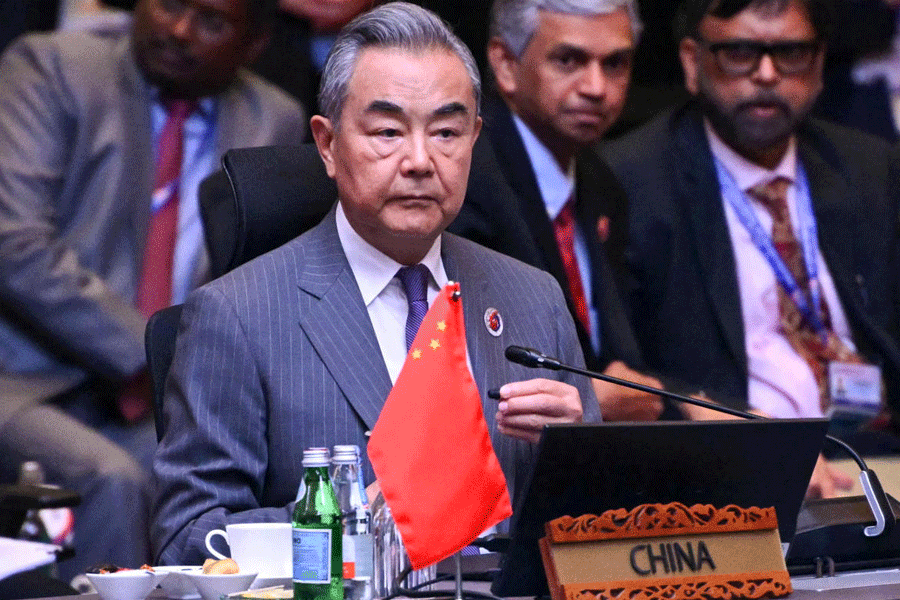|
|
| More shine |
The visit of the prime minister of China has triggered many comparisons between India and China. A recent presentation of an ongoing study on China by Jean-Francois Huchet, professor, University of Rennes in France, brought out some less-known facts about the Chinese economy. The many publications trying to explain the Chinese miracle, including the very illuminating China Inc. by Ted C. Fishman, shine more light on the development of corporate China. China today is more open in sharing data, there is more private collection and dissemination of data and many Chinese economists share the suspicion of government data.
Huchet?s studies show that corporate ownership as of now is, in much of Chinese industry, primarily with the state. He classifies companies in the Nineties into ?red chips? that consist of companies registered on the Hong Kong stock exchange, mostly catering to export markets. A large part of China?s industrial production comes from the relocation of industries from Hong Kong (80 per cent of Hong Kong?s industrial capacity moved to China in the mid-Eighties), Taiwan and south-east Asia. (When such relocation was possible to India, our ?socialism?, suspicion of private foreign investment, and our capacity for red tape killed such attempts.)
State and Central government-owned companies in China are in ?protected? sectors in which foreign investment is not allowed. There are also autonomous state-owned enterprises that are leaders in the country (like Lenovo which recently bought IBM?s personal computer business). Urban employment is heavily dependent on state enterprises. Bottomlines of state enterprises are poor.
As of now most multinational entries are joint ventures with the government. This will change, since entry into the World Trade Organization requires China to allow foreign companies freer and unconditional entry. Almost half of exports are by government joint ventures with foreign companies. Private companies are in some competitive sectors and there are small private and family enterprises in service sectors in urban and rural China.
The favourable factors for industry are stability in policies, growing competition, enterprise-friendly banking and monetary policies, encouragement to export promotion and foreign direct investment, and relative autonomy to state-owned enterprises though government interference is not unknown.
Huchet identifies many negative factors. They include a highly politicized banking system, high and growing government deficits, soft budgetary constraints on the state enterprises and weak bankruptcy legislation. Other weaknesses in the environment for corporate enterprises include a great lack of trained and experienced managers; an inadequate ?soft? infrastructure of chartered accountants, cost accountants, company secretaries, economic, market research and advertising agencies; many institutional and ideological blockages to the private sector; weak observation of contracts and an unreliable legal system; difficult access to the country?s financial system by the private sector. The entry into WTO will compel changes in ownership, open up many sectors to private and foreign investment, increase competition and lead to closure of many state enterprises.
What explains the continuing vitality in the economic growth of China? Studies show improvement in labour and capital productivity since the mid-Nineties. The government has slowly deregulated and encouraged competition in many sectors. It has been cautious in macroeconomic management, for example, maintaining an open trade framework while continuing a closed (regulated) financial system, which saved it from the south-east Asian crisis. A large and growing domestic market (200 million in the middle class) is a magnet for investors. It also balances the domestic economy against risks of export decline.
The government has over the last 10 years invested 8.6 per cent of the country?s gross domestic product in infrastructure. This has created a virtuous cycle of investment and growth. Investment in research and development has also been substantial and is now third only after the United States of America and Japan. Despite this, there is a growing shortage of power and not as much original design and development as might be expected. The dependence on oil and gas imports has made China invest heavily (and apparently not always wisely) in overseas wells. The heavy pollution owing to the use of domestic coal will almost certainly become an issue that will hurt China?s industrial production. India is following China in buying overseas oil and gas fields and will face environmental challenges from the rest of the world because of its polluting coal.
China?s other challenges to economic growth include the work force (aged 15 to 59), expected to decline after 2010, leading to rise in wages. The population will be ?old before becoming rich? as the proportion of young people diminishes. The state must speedily build a pension system where none exists. This demographic change will also affect entrepreneurship and dynamism. While India?s work force will continue to rise for a decade or more beyond China, we also must introduce a social security system.
Since 1994 there has been a rising trend of mergers and closures of unprofitable state enterprises. As each province tried to emulate the other, the result has been an excessive number of producers of cars, consumer durables and so on. This has led also to growing bankruptcies (two-thirds of bank losses are due to state enterprises). Even more than India, China has to confront the demands of privatization. There must be a reform of corporate governance to enable greater transparency. The challenge of finding jobs for workers displaced due to closure of unviable state enterprises has yet to be resolved.
The Chinese banking system is badly in need of more reform. Non-performing assets to gross national product have declined from a high of 24.9 per cent in 2000 to 15.2 in 2002 (though some say that the figure today if properly calculated, is 45 per cent). India in 2002 had 1.8 per cent NPAs to GNP. Banks have had fresh infusions of capital in 1997, 1998 and 2004 and more is needed. While asset reconstruction companies in China are to buy weak bank loans and sell them, there has been little result. As foreign banks begin to set up as a result of the WTO agreement, Chinese local banks are likely to be left with weak assets. Here India?s nationalized banks are ahead of China.
China must settle the challenges of energy shortages, growing pollution, regional inequalities that will lead to political instability in the next 20 years before the demographic changes slow down growth.
India has hardly studied China?s economic growth and weaknesses. China, with its centralized system, is able to conduct such studies quickly. Its study of India?s information technology is one such example, and the effort to get people to learn English is another. When China understands a problem it moves swiftly to resolve it. We do not.
China put maximum emphasis from 1978 on exports and on manufactured products. While our exports to GDP doubled in a decade, we are far behind China. Chinese manufactured goods exports went up in GDP from 4 per cent to 18 per cent; in India they were 7.1 per cent. China concentrated on industrial growth. Industry?s share of GDP rose sharply over the 20 years of reform from 1978. In India, it has remained static. Our infrastructure investments are low and inefficient.
With China joining the WTO, there will be more competition for India. China may gain large market shares in cars and other consumer durables. Inside WTO, it will have to play by the rules.
Our weakness is the hypocrisy of our political leadership, poor implementation capability of our administration, speculative mentality of so much of our industry, poor work ethic in the workforce encouraged by legislation, leadership, and public ownership. We need to change our mindset from achieving equality within a small economy to rewarding performance.












